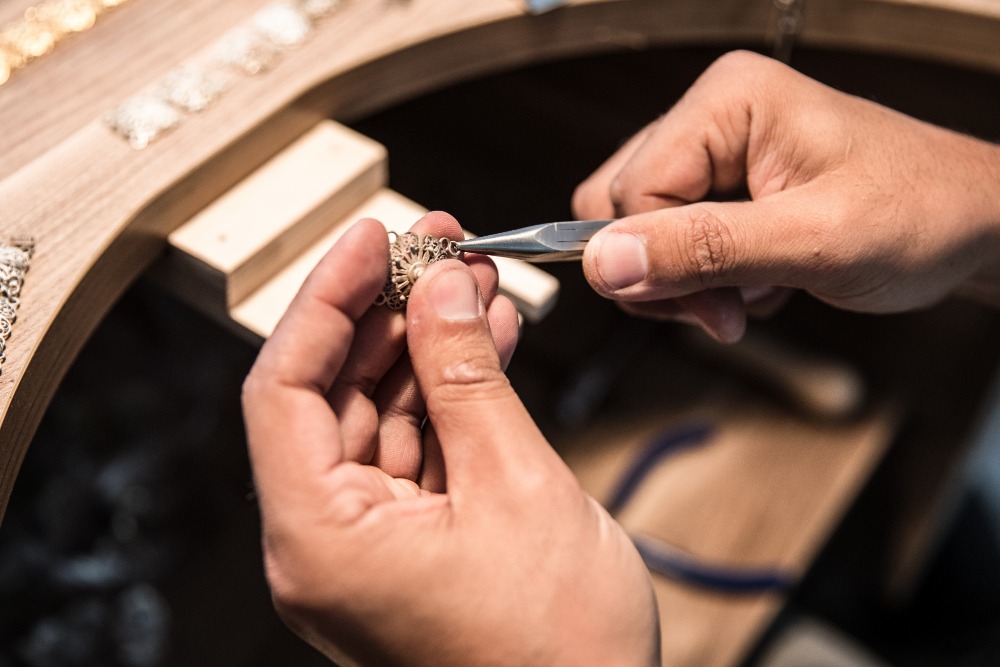






When a valuable piece of jewelry—like an engagement ring or a family heirloom—is lost or stolen, the first thing your insurance company will ask for is proof of its value. If you don’t have a professional appraisal, you may face a difficult claims process and receive a settlement that falls far short of the item’s actual worth.
This is a common problem, as many people mistakenly believe their standard homeowner’s or renter’s policy provides full coverage for jewelry. In reality, these policies have low limits, leaving you underinsured. A professional appraisal is the key to closing that coverage gap. Let’s walk through why it’s an essential tool for protecting your most valuable pieces.
If you want adequate coverage for valuable jewelry, you need a professional appraisal. Standard homeowner’s and renter’s policies are not designed to cover high-value items, often capping jewelry protection at just $1,000 to $2,500 for all your pieces combined. If your engagement ring alone is worth $8,000, you’re already facing a significant coverage gap.
Key Takeaway: Standard homeowner’s and renter’s insurance policies often limit jewelry coverage to just $1,000 - $2,500 total. This is why specialized coverage is essential for valuable pieces.
To get proper protection, you need to add your jewelry to a scheduled policy (also known as a rider or floater). Insurers require a professional appraisal to issue this type of coverage, which provides itemized protection and covers perils like accidental loss—something standard policies exclude. Furthermore, an appraisal serves as irrefutable proof during a claim, documenting your jewelry’s specific characteristics and value to ensure a smooth process.
A professional appraisal also establishes an accurate replacement value. This isn’t what you paid for the item; it’s what it would cost to replace it with one of like kind and quality in today’s market. Because precious metal and gemstone prices fluctuate, this value can change significantly over time. An appraisal ensures your coverage reflects the current market, protecting you from both being underinsured and from overpaying on premiums for an inflated value. To learn more about appraisal methodologies, visit our blog.
Now that you understand why an appraisal is critical, the next question is how often you need one to stay protected.

Jewelry appraisals have a shelf life. Because values change, an outdated appraisal can leave you just as vulnerable as having no appraisal at all. Most insurance professionals and appraisers recommend updating your appraisals every two to three years. This frequency accounts for fluctuations in precious metal and gemstone markets, as well as inflation in labor costs.
Rule of Thumb: Update your jewelry appraisals every 2 to 3 years. An outdated appraisal can leave you significantly underinsured.
You should seek an update even sooner if you modify a piece of jewelry—like resetting a stone—or if there are major market shifts, such as a sharp rise in gold prices. If you file a claim with a ten-year-old appraisal, your insurer may dispute the value or reduce your payout. Don’t wait for a loss to discover your coverage is out of date.
Getting an appraisal regularly is important, but it’s equally crucial to ensure you’re getting the right kind of appraisal.

Not all appraisals are created equal. To be accepted by an insurer, your documentation must meet professional standards. A complete appraisal includes a detailed description of the item, full gemstone and metal specifications, clear photographs, and the current replacement value. It must also list the appraiser’s credentials and state its compliance with the Uniform Standards of Professional Appraisal Practice (USPAP), the recognized ethical and performance standard for the industry.
Crucial Detail: A credible jewelry appraisal requires a hands-on, in-person examination by a certified gemologist. Appraisals based only on photographs are not sufficient for insurance purposes.
A certified gemologist must perform a hands-on examination to accurately grade gemstones, test metal purity, and assess craftsmanship. When choosing an appraiser, look for professionals with credentials from respected organizations like the Gemological Institute of America (GIA), the American Society of Appraisers (ASA), or the National Association of Jewelry Appraisers (NAJA).
With a better understanding of the appraisal process, let’s address some other common questions.
Q: Can I use my purchase receipt instead of an appraisal?
A: No. A receipt shows what you paid, not what it will cost to replace the item today. Market values change, and receipts lack the detailed descriptions insurers need to source an equivalent replacement. While helpful as supporting documentation, a receipt is not a substitute for a professional appraisal.
Q: How much does a jewelry appraisal cost?
A: Professional jewelry appraisals typically start around $195 for a single item. While this may vary, you can review our clear pricing structure for more details. The investment is minimal compared to the protection it provides.
Q: What’s the difference between an insurance appraisal and an estate appraisal?
A: These serve different purposes and use different values. An insurance appraisal uses replacement value (the retail cost to replace an item), while an estate appraisal uses fair market value (the price a willing buyer would pay a willing seller, which is typically lower). You must obtain the correct type for your needs.
Your jewelry represents both a financial investment and irreplaceable sentimental value. Proper insurance protection starts with a professional appraisal that accurately reflects its true worth. Start by reviewing your current insurance coverage to understand your jewelry limits, then inventory your valuable pieces to identify which ones should be individually scheduled. Once you have current appraisals from a qualified, credentialed appraiser, contact your insurance agent to update your policy and ensure you have adequate coverage. Finally, set a reminder to update your appraisals every few years. Don’t wait until after a loss to discover a gap in your coverage.
We provide USPAP-compliant jewelry appraisals conducted by credentialed gemologists who understand insurance company requirements. Our detailed reports give you the documentation you need for confident coverage.
Contact us today to schedule your jewelry appraisal and ensure your valuable pieces receive the protection they deserve.




